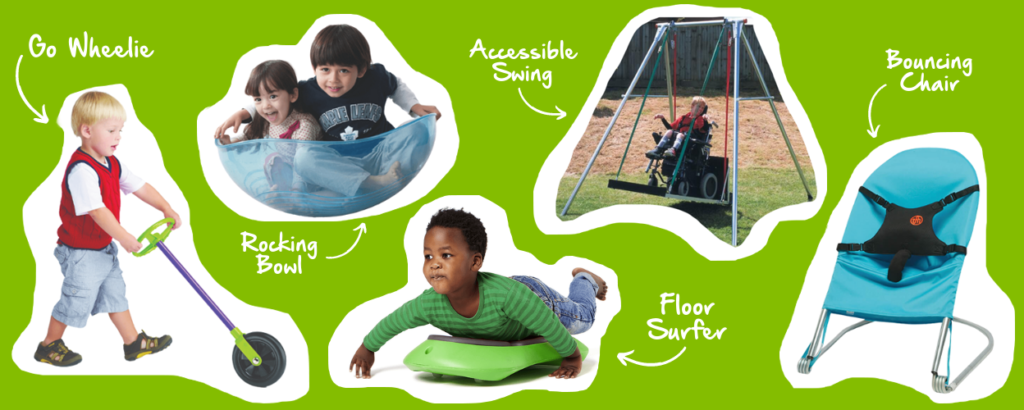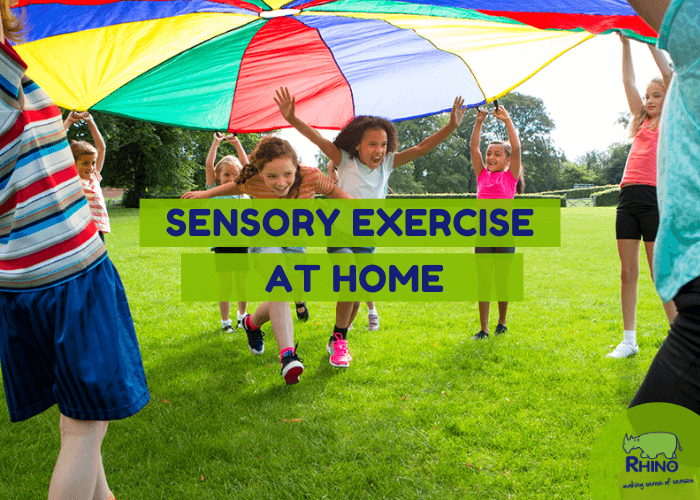Last month the government unveiled their latest report looking into the health and wellbeing of children and young people with disabilities and special needs.
It’s the first report of its kind, written by researchers from the University of Bristol, Durham University and Disability Rights UK.
We’ve spent the time reading the report and listed the main takeaways below.

5 Key Takeaways
1. Exercise is as important for non-disabled children as it is for disabled children.
“The scientific evidence is clear. Disabled children can benefit from being physically active in their everyday lives.”
Like everyone else, disabled children should aim to do around 120-180 minutes of aerobic activity each week. It doesn’t have to be done all in one session, and it’s best spread out across the week in daily 20 minute or every-other-day 40-minute chunks.
So, whether that’s a sunny afternoon playing in the park, walking the dog, or a daily dance session – putting aside half an hour to get active should be quite achievable.
Alongside the aerobic exercises, the experts also recommend mixing in some challenging strength and balance-focused activities too. These don’t have to be as complicated as they might seem, and they could be as simple as swinging on a swing or moving with weighted bands on your wrists or ankles. But doing these sorts of exercises is important for building muscle strength and body confidence.
2. Children are more likely to engage in activities when they’re inclusive, fun and enjoyable.
Motivation is key to getting active, and what better way to motivate children to get moving than making it fun?
Whether that’s joining a local sports team, finding a friend to join you on your active journey, or thinking outside of the box with your activities, e.g. having an impromptu sensory disco. There are lots of ways that you can upgrade your activities.
Find a list of local groups you could join here: https://www.ableize.com/disabled-groups-and-clubs-by-county/
3. There aren’t any health or safety risks when disabled children exercise – so long that it’s within their limits.
Parents can sometimes be sceptical about the safety of getting their disabled child active, although you could be doing more harm by stopping them from getting active in the long term.
The academics in the study found that there was no evidence to show that physical activity was unsafe for a disabled child, so long as it is performed at an appropriate level for their physical development, fitness, physical and mental functioning.
4. Exercise can build muscle, strength and confidence.
Exercise has a lot of benefits. Not only will it keep you fit and healthy, but it will also strengthen your muscles and bones, help you to maintain a healthy weight, improve your sleep, build confidence and social skills, boost your mental health and aid concentration and learning!
5. Even small bouts of activity can provide benefits.
Sometimes the commitment of 120 minutes of weekly exercise can seem like a lot. If it does feel overwhelming, why don’t you set yourself a task to do something active for five minutes every day? That’ll quickly build up to 35 minutes of exercise in the week.
After some time, you might find that you can do four 5-minute activities every day – and you’ll have reached the recommended 120-minute goal without having to put in too much of a sweat.
Thinking about how to make things manageable will help you make them manageable.

Active Activity Ideas
It’s always a little daunting to know where to start with exercise, but it shouldn’t be. We’re not recommending that you sign up for a marathon. But what we are suggesting is that you try to get a bit more active during the day.
Whether that’s going for a walk, doing a happy dance, or stretching. Doing simple, accessible, and fun actions every day is a great way to build up your fitness levels over time.
Our Sensory Experts have put together a few fun and inclusive sensory exercises designed to stimulate different systems and muscles; check them out below!
Swinging
Not only are swings calming, but they’re also great for stimulating your vestibular systems – which helps you balance. Spending time swinging is a fun and relaxing way of actively developing your sense of balance.
Swings: Accessible Swing Seat, Wheelchair Friendly Swing Platform, Swing Frame, Nest Swing.
Bouncing
Bouncing, rocking, moving and stimming are common sensory seeking impulses. Channelling stims into a sensory activity can be an accessible and inclusive way of getting active and strengthening muscles.
Our Bouncing Chair is built to help you bounce in comfort. Its curved shape supports your body as you bounce, helping you relax in the stimulating movement. It’s available in two sizes for smaller or larger children.
Rocking
Rocking and spinning in our funky sensory bowls can help you develop balance, gross motor and coordination skills. Use your whole body to carefully move the bowl from side to side, and try not to tip it over. They’re also suitable for indoor and outdoor play.
Rocking Bowls: Bilibo.
Surfing
Our bright green Floor Surfer combines play, movement, balance, and motor skills development. Specially designed to support the user’s coccyx when sitting and the sternum when lying down, this handy sensory resource stimulates proprioceptive systems to that you can surf comfortably.
Build strength in your arms and legs as you push yourself along as you surf through your house or garden and discover it from a new perspective.
Walking
Walking provides the perfect opportunity to get outside and explore nature, although not all of us may be as comfortable on our feet. The Go Wheelie is a great walking support for users who aren’t as confident in their movements. Not only does it help them along, but it also encourages muscle control and strengthening too!

Useful Links
- Full government report: https://www.gov.uk/government/publications/physical-activity-in-disabled-children-and-disabled-young-people-evidence-review/physical-activity-for-general-health-benefits-in-disabled-children-and-disabled-young-people-rapid-evidence-review
- Scope, Sport and exercise for disabled children and young people: https://www.scope.org.uk/advice-and-support/sport-exercise-disabled-children-young-people/
- NHS Accessible Activities: https://www.nhs.uk/healthier-families/activities/accessible-activities/
- Sensory at Home, Sensory Exercise Collection: https://www.rhinouk.com/sensory/sensory-at-home/sensory-exercise/

